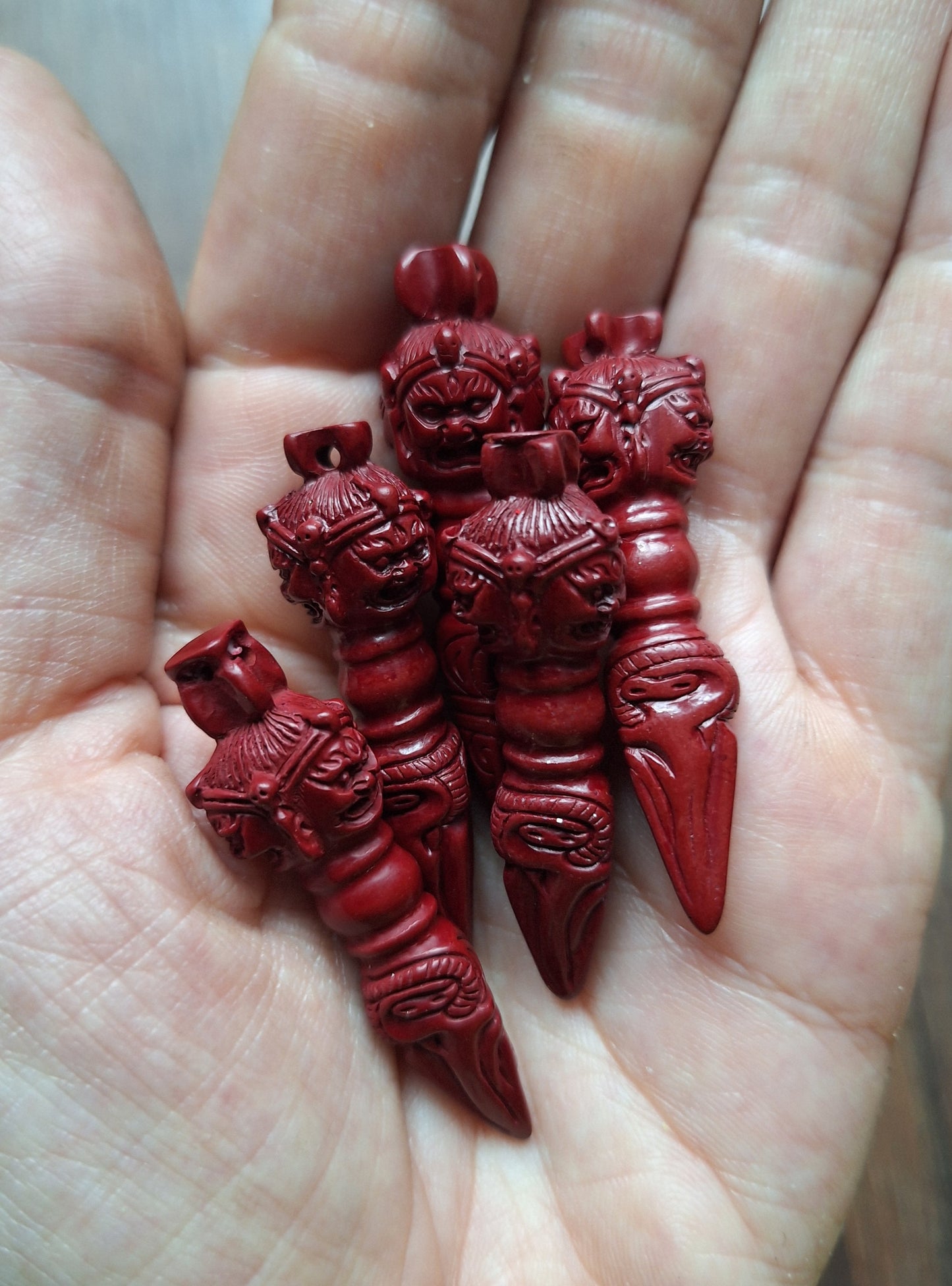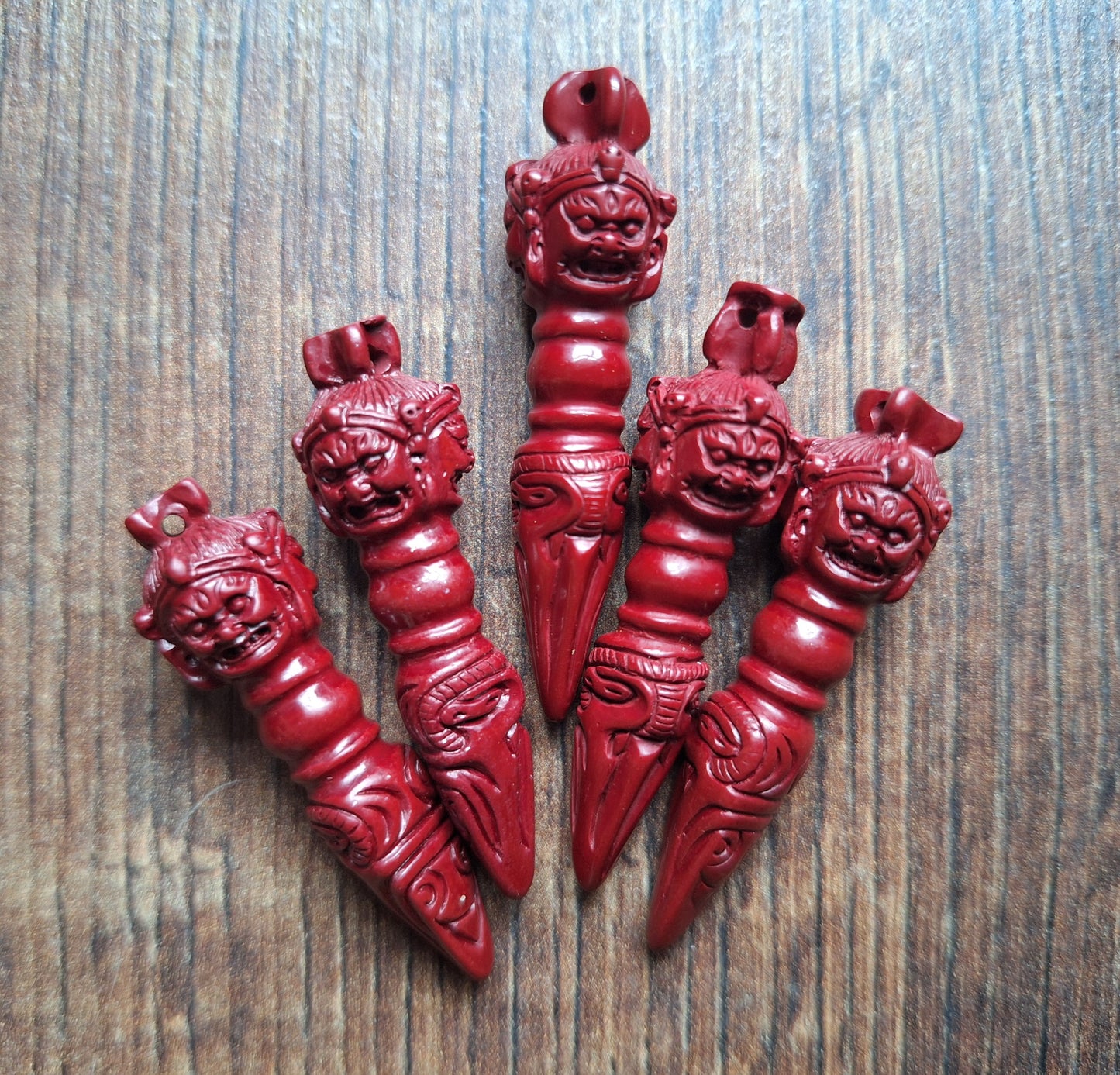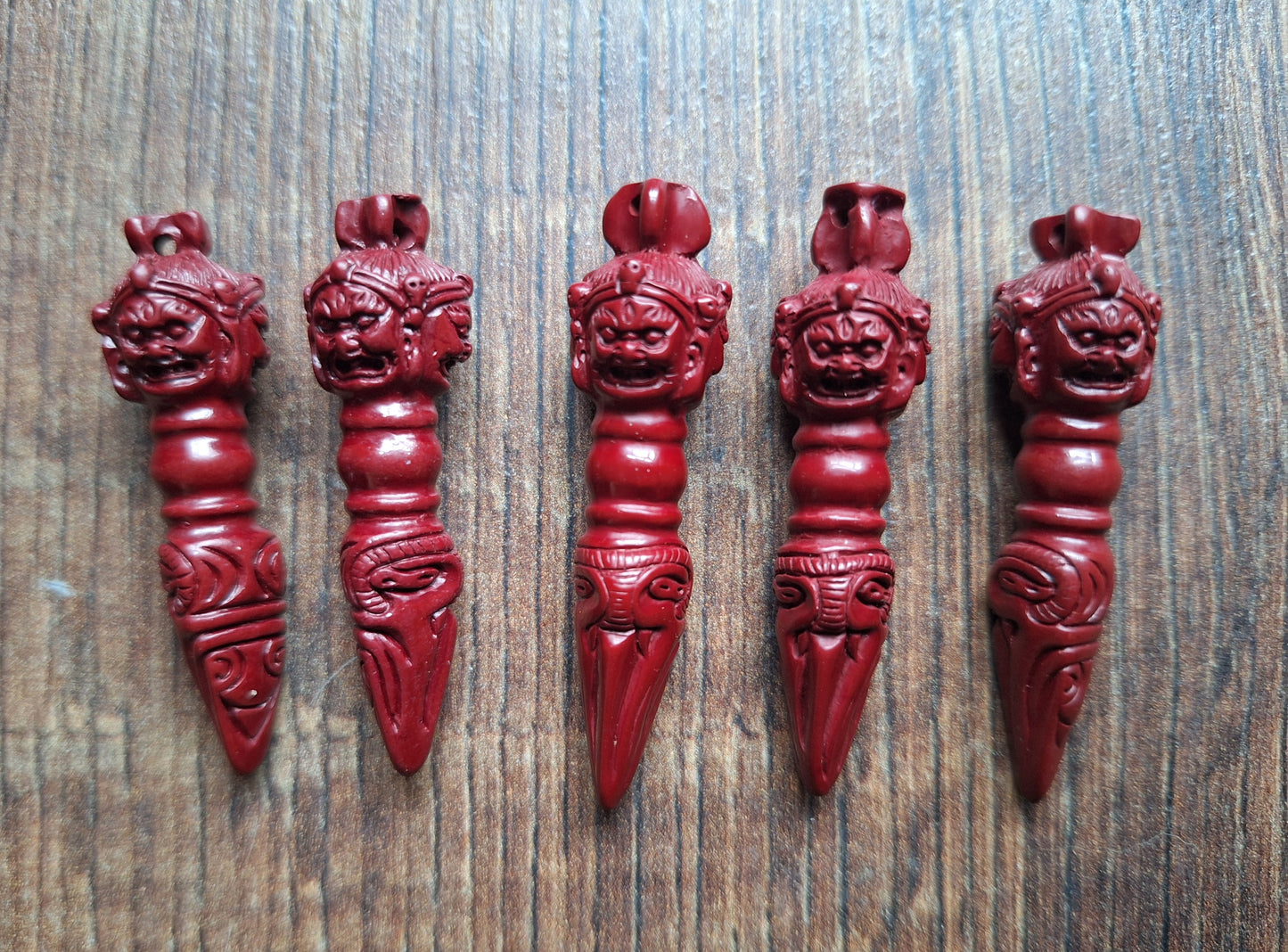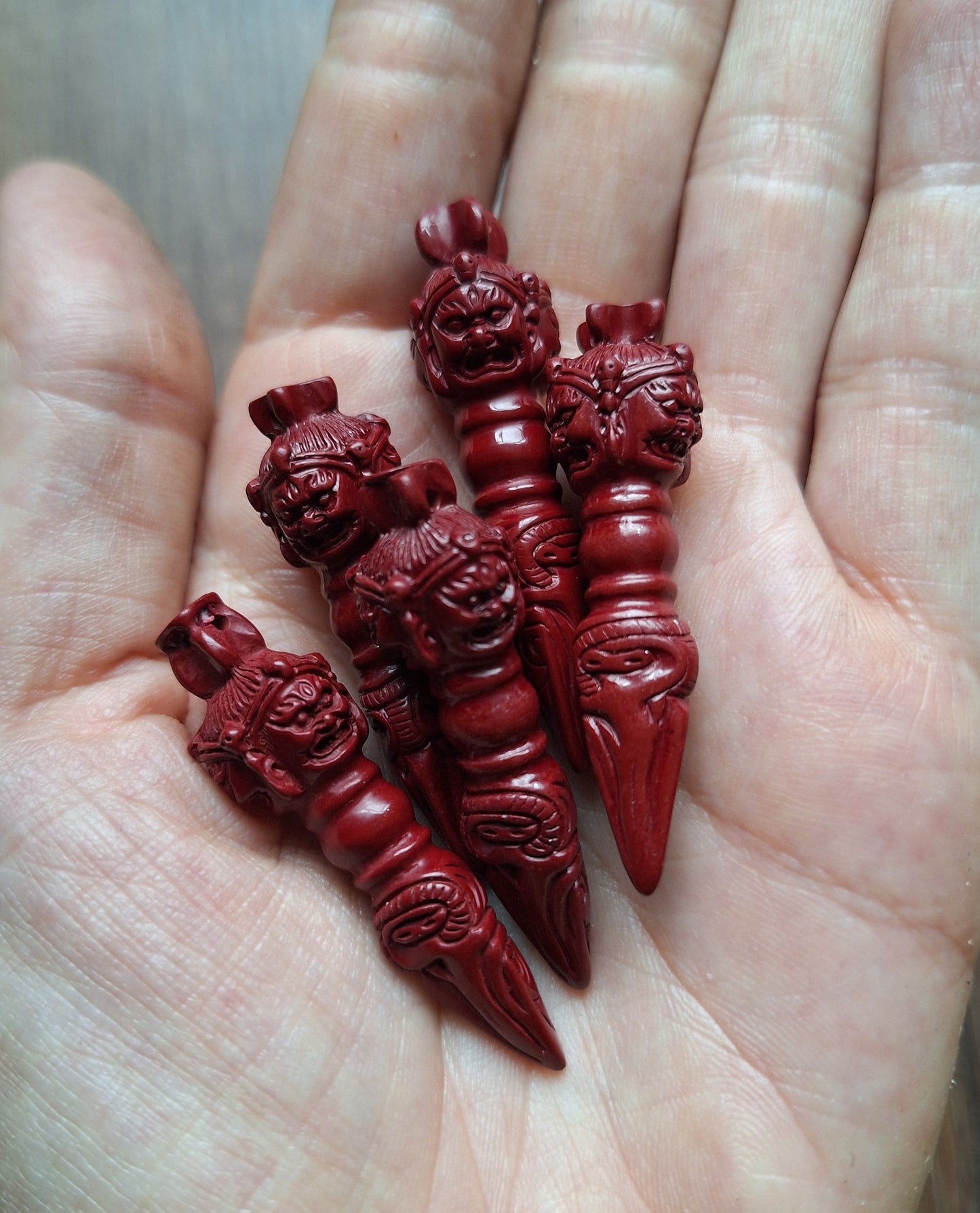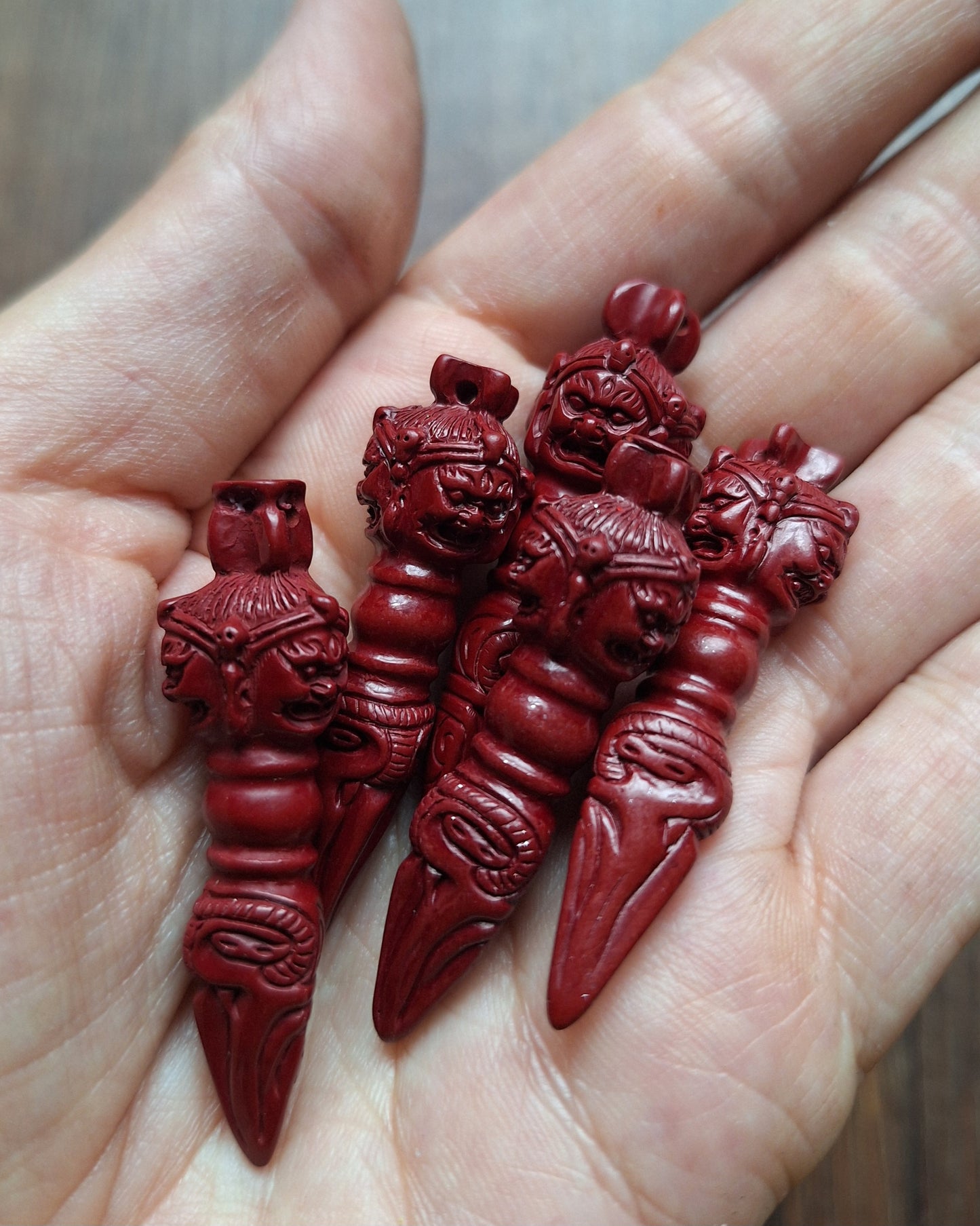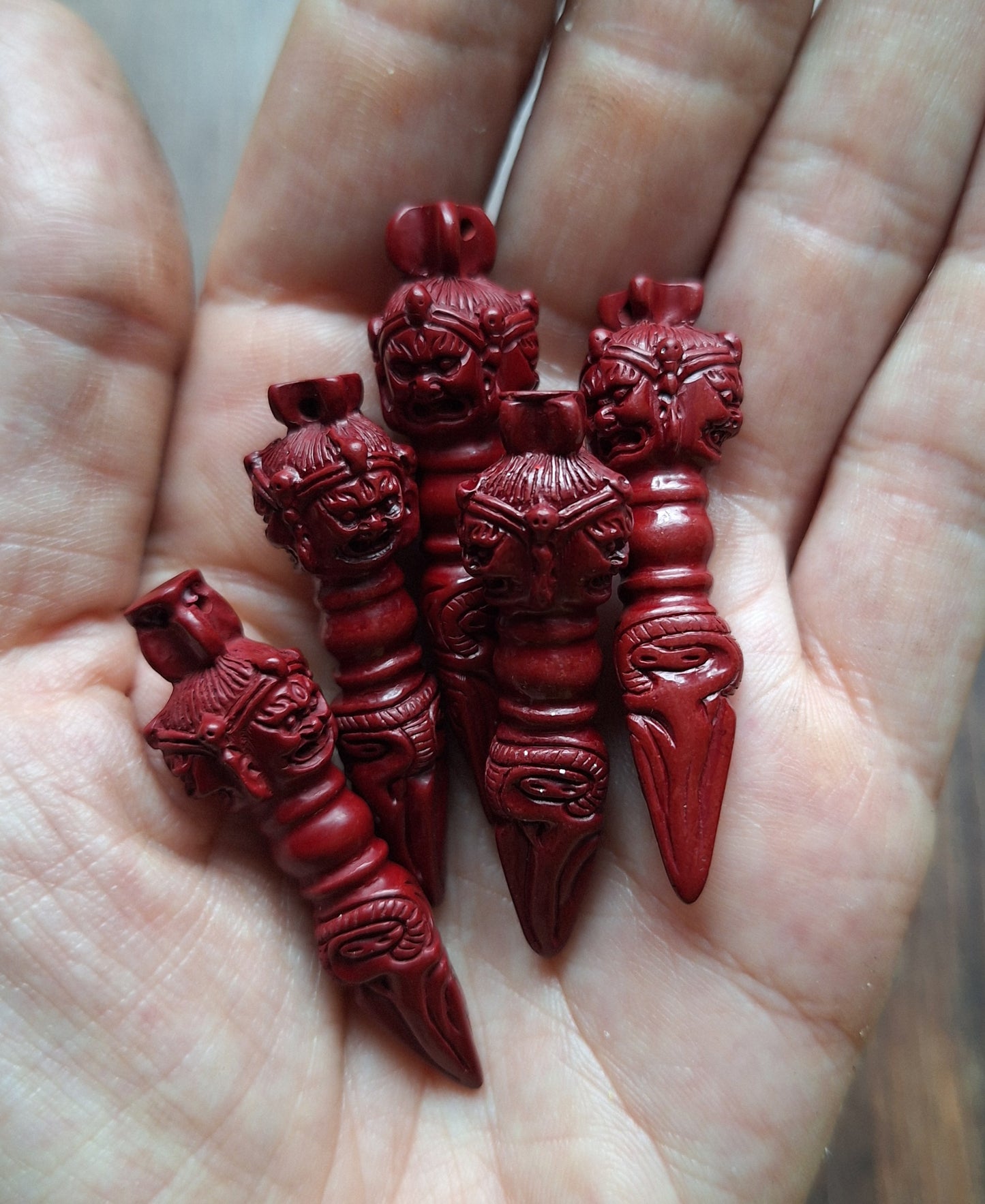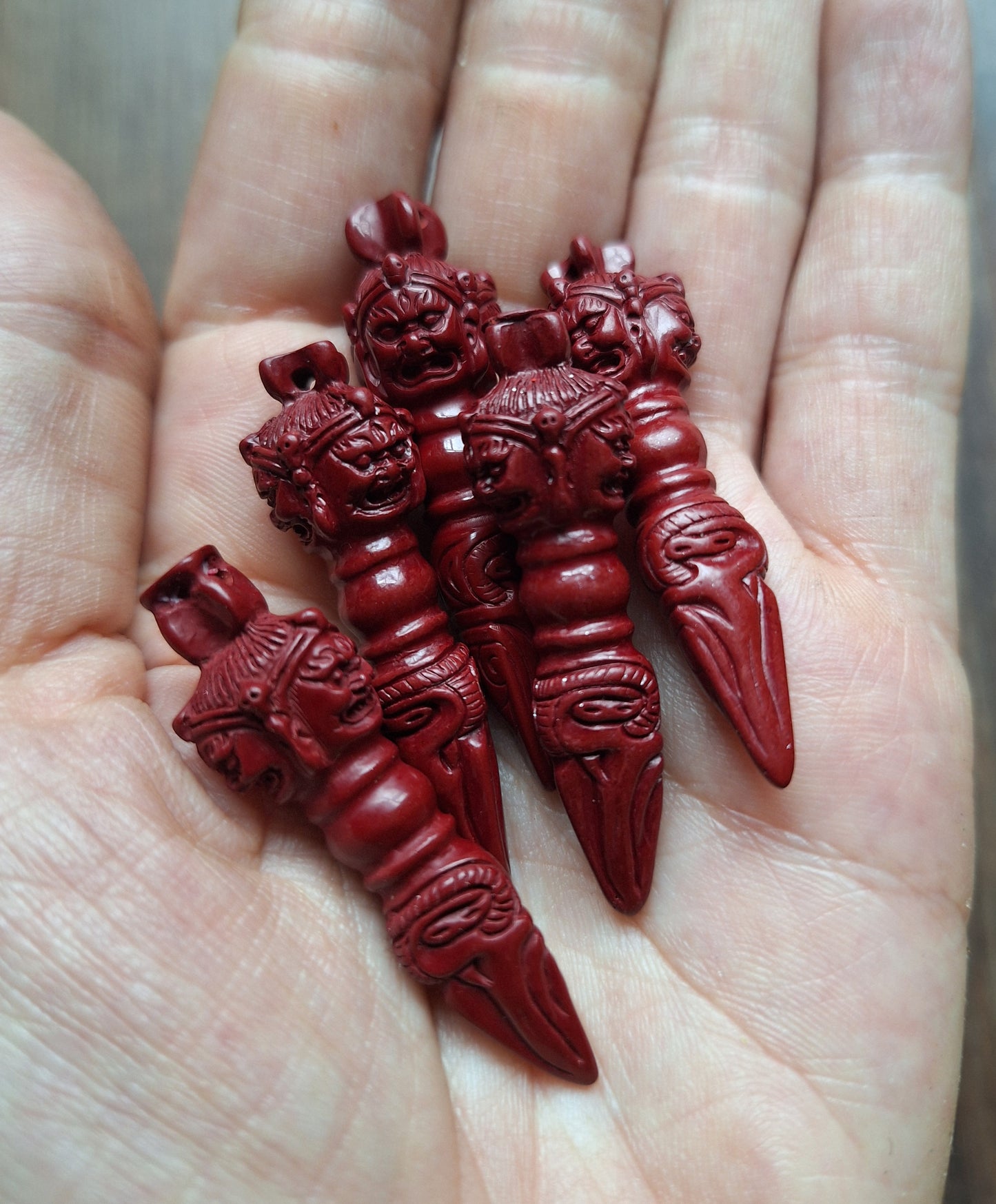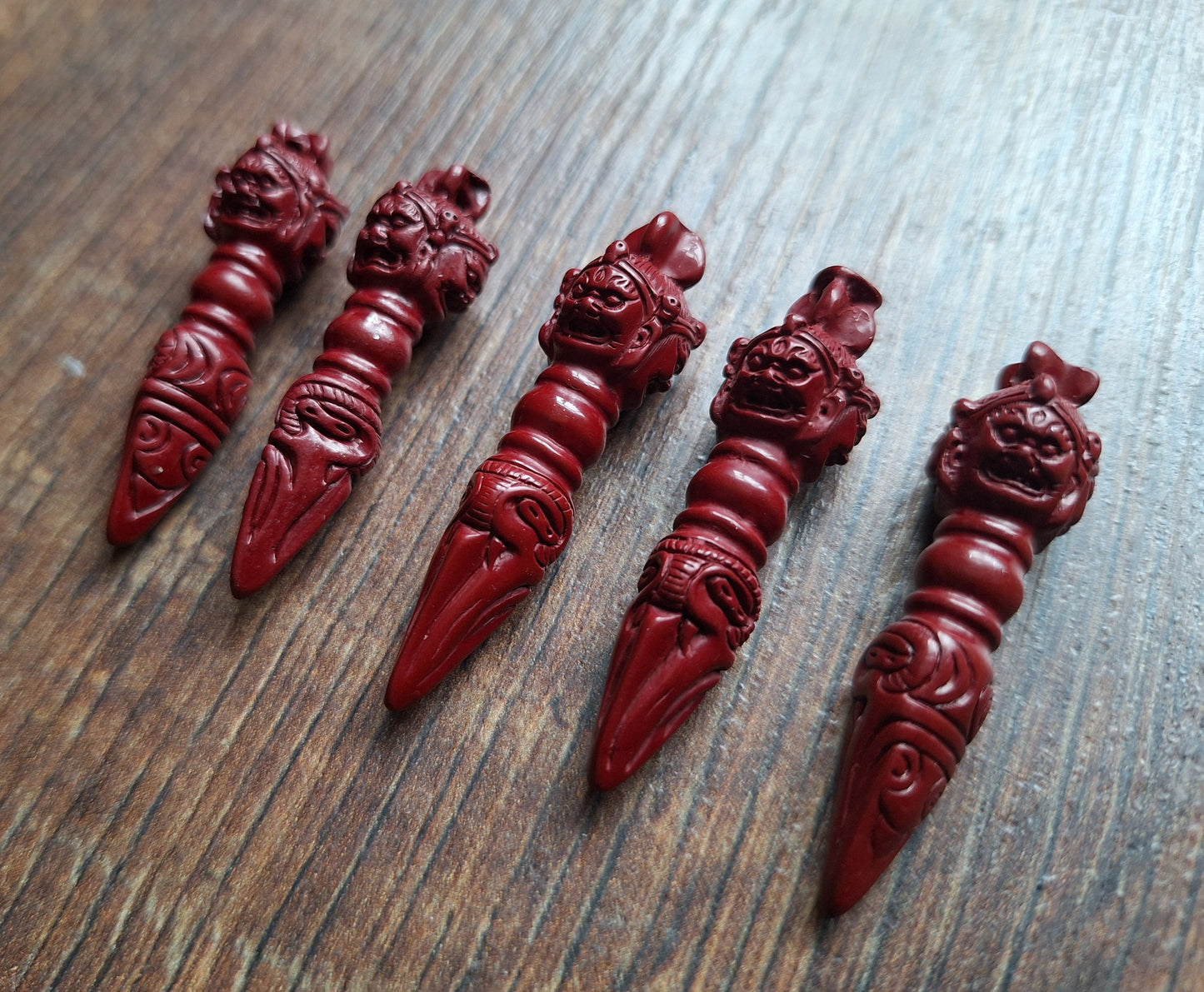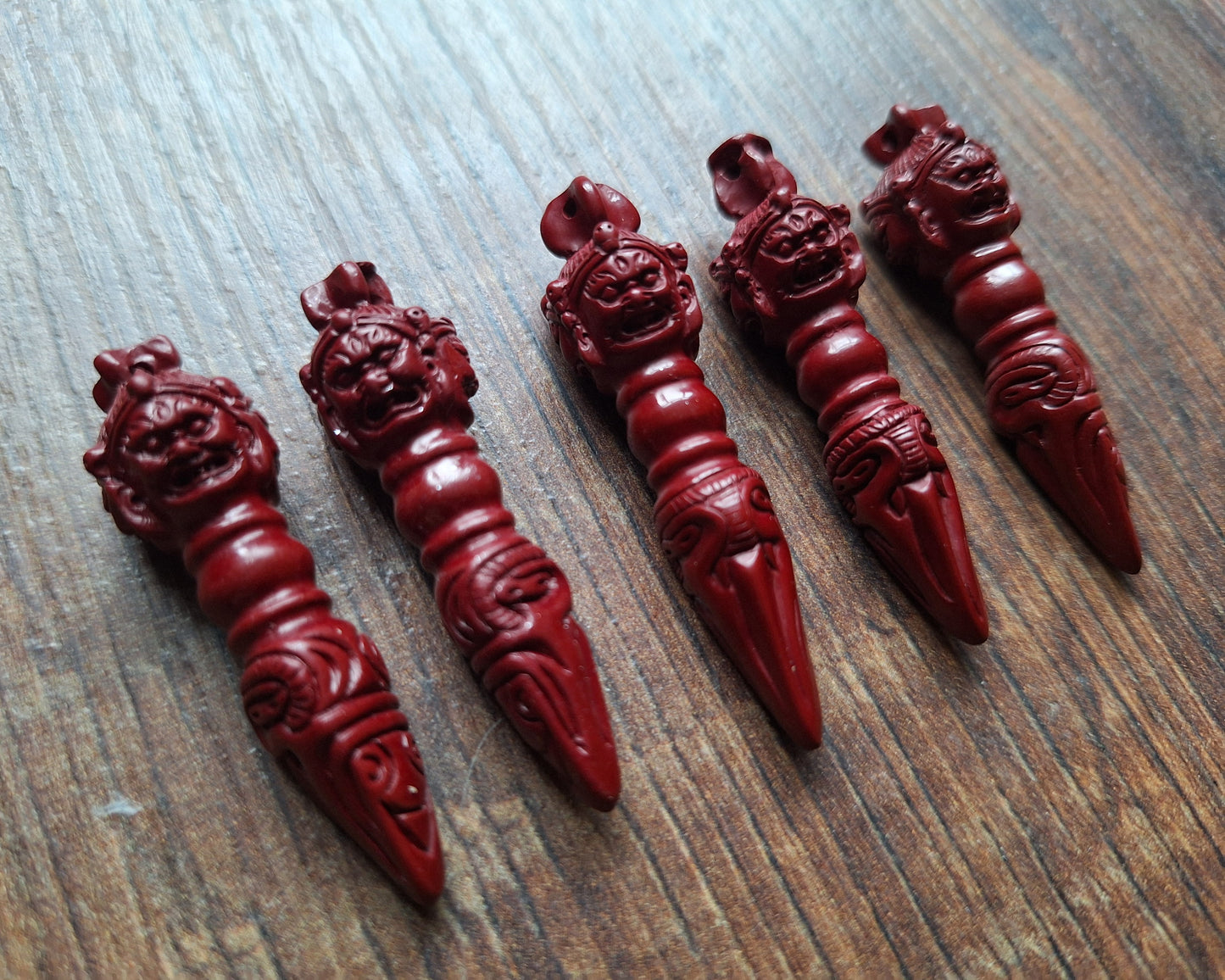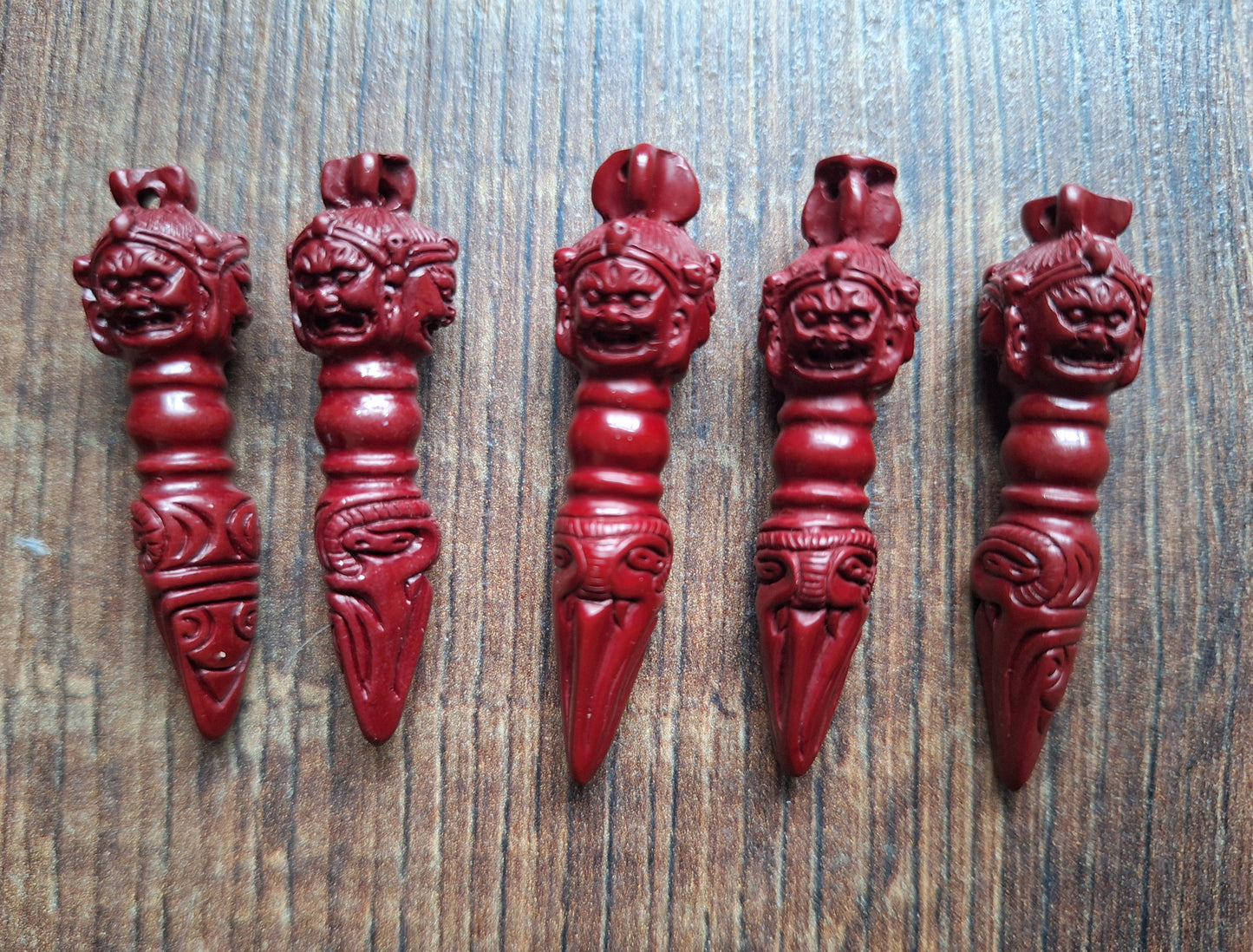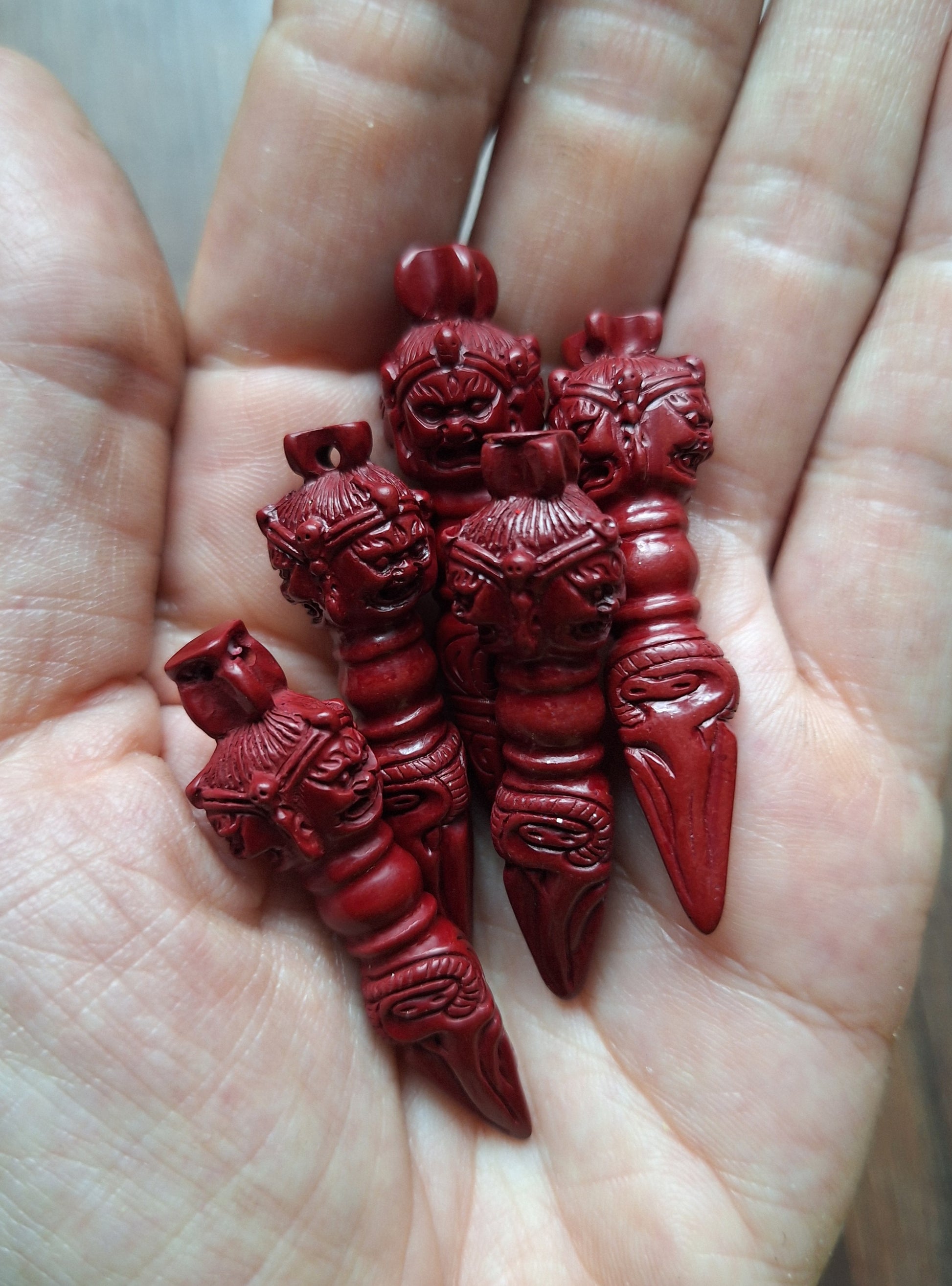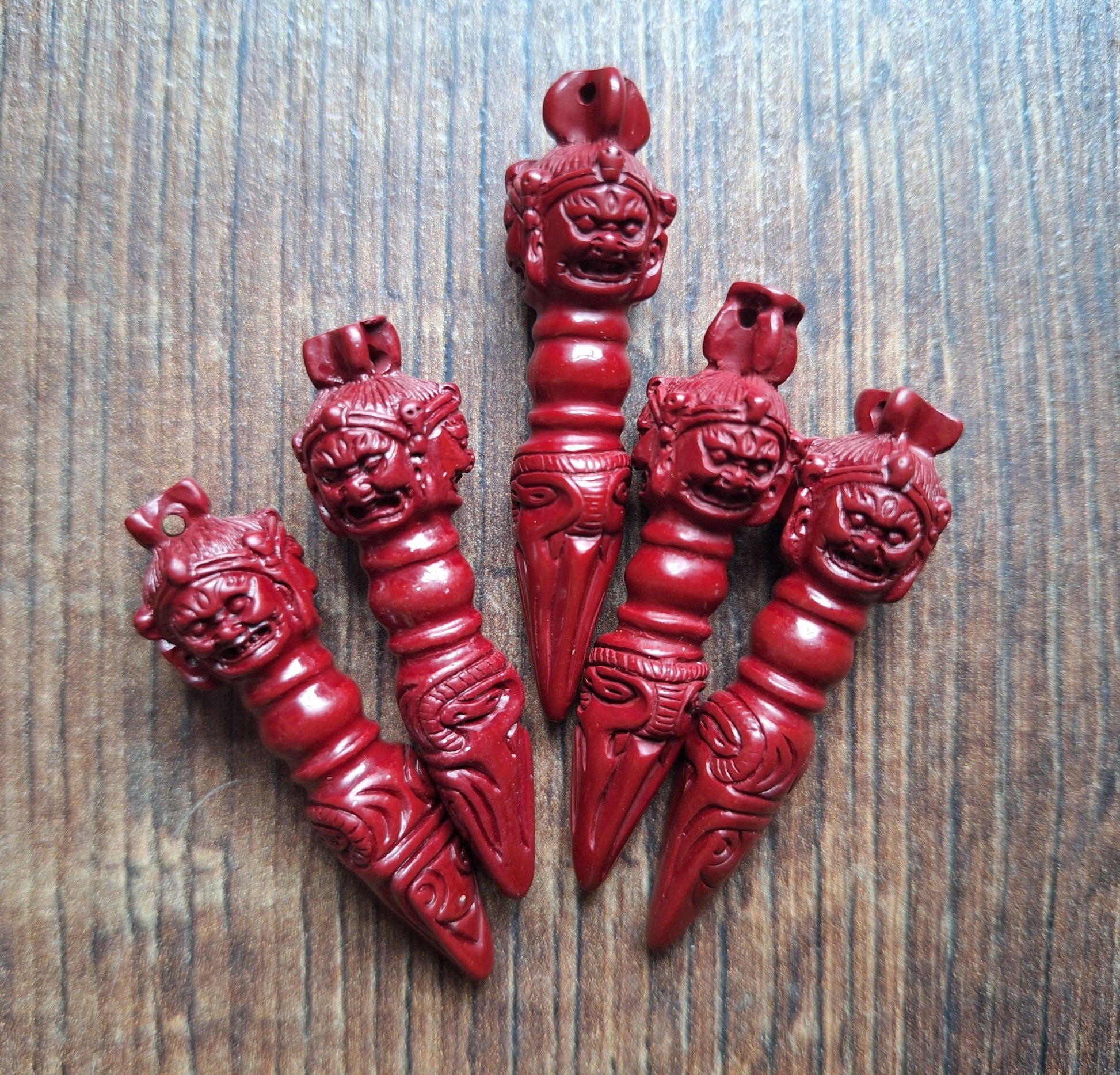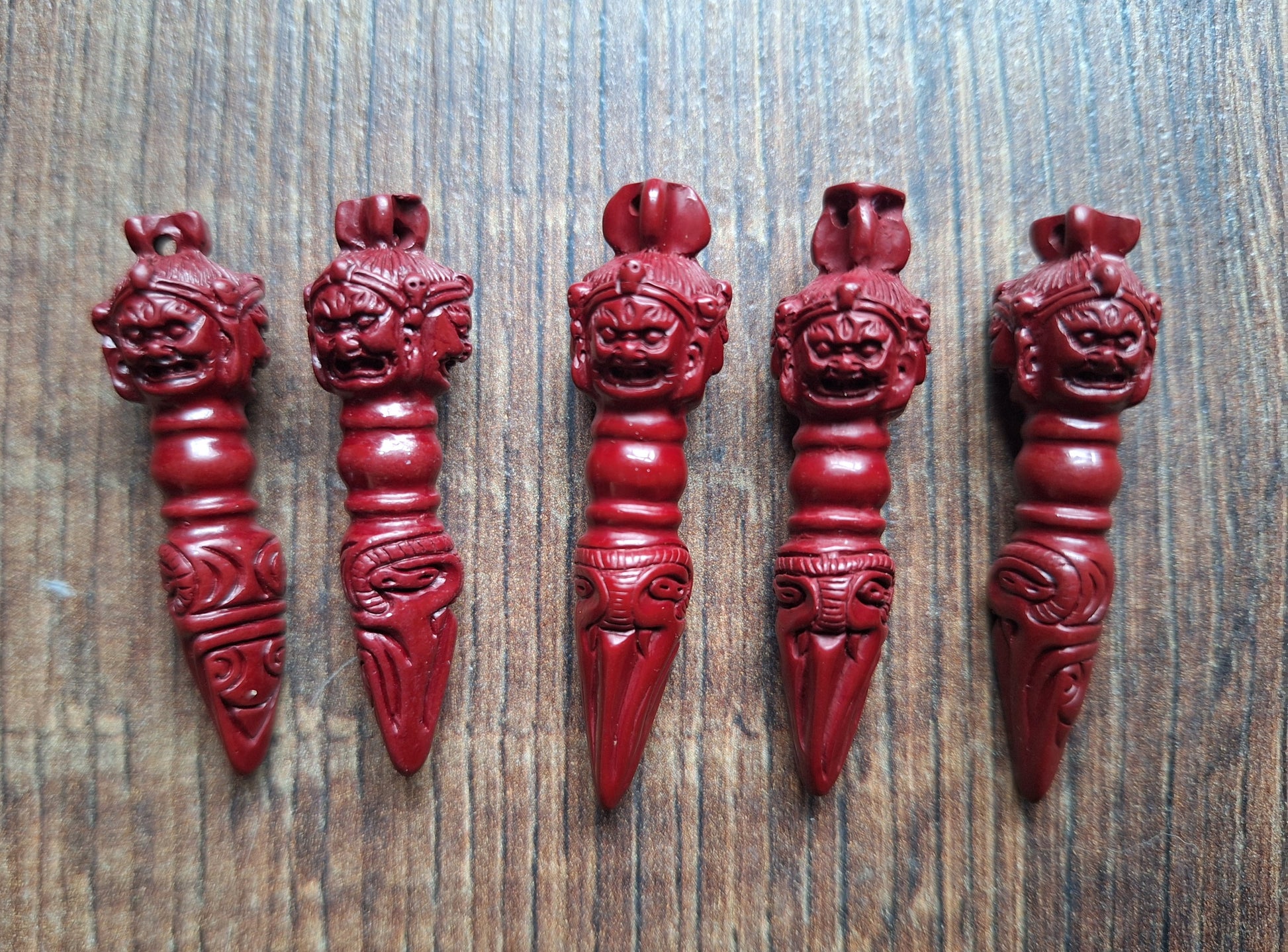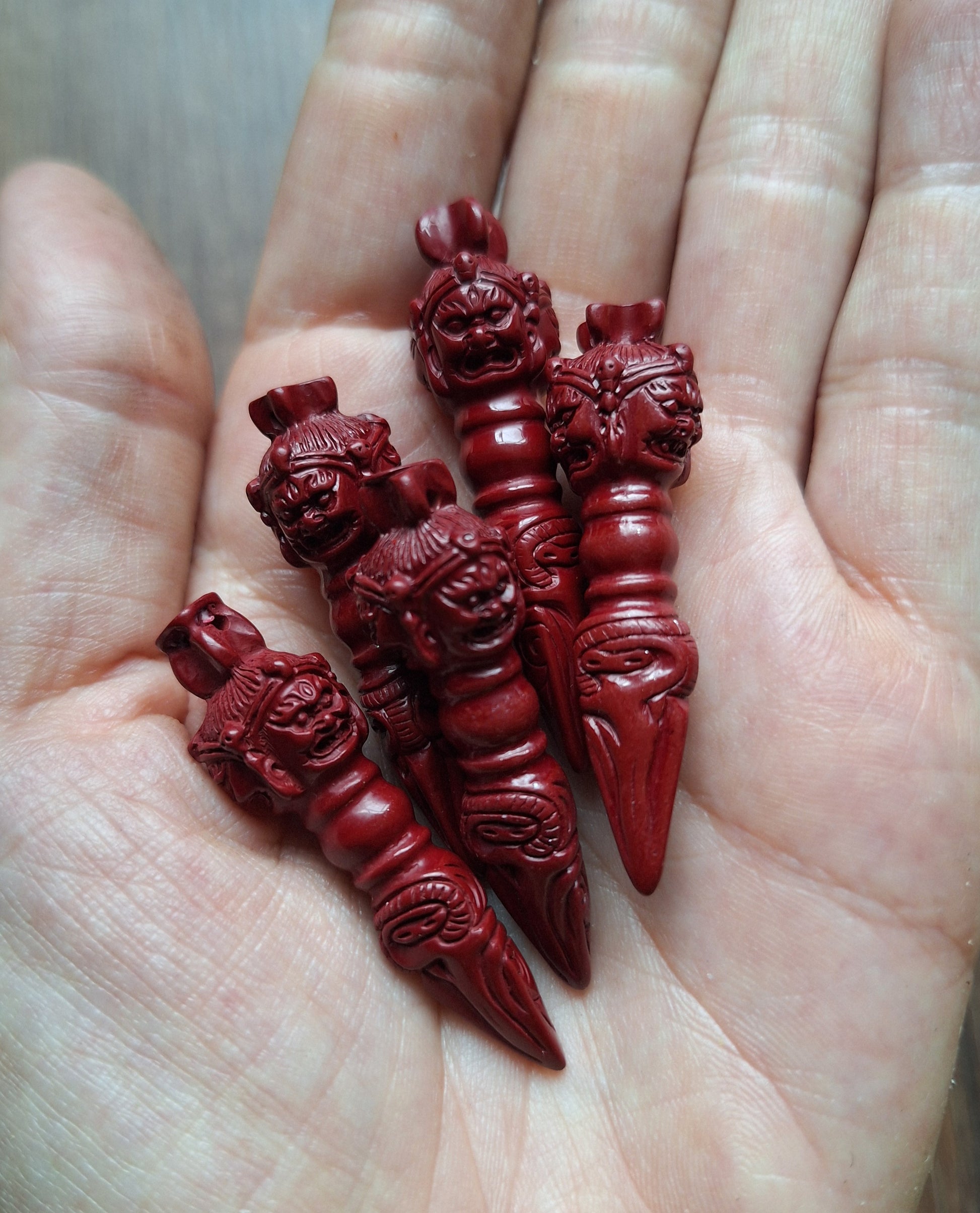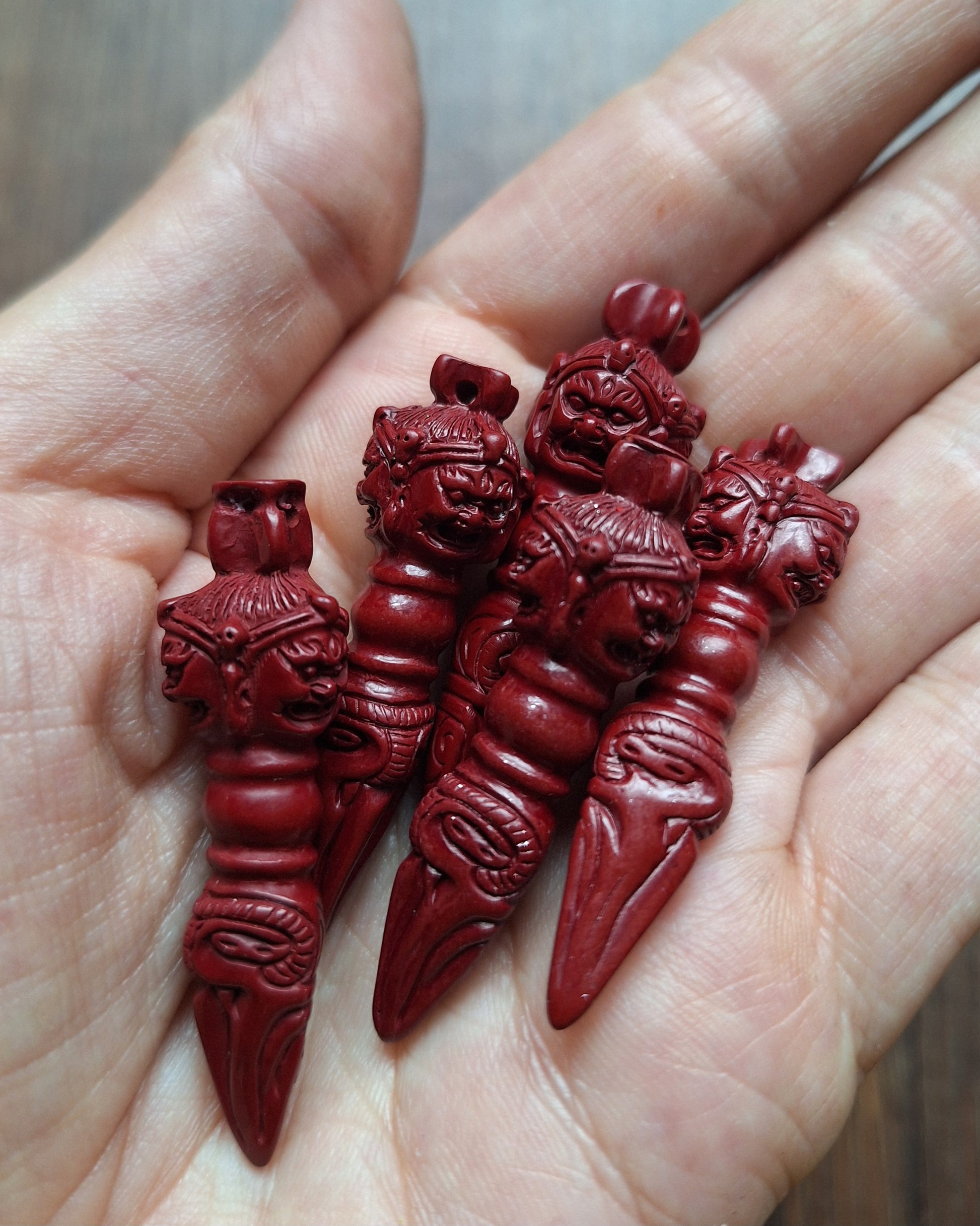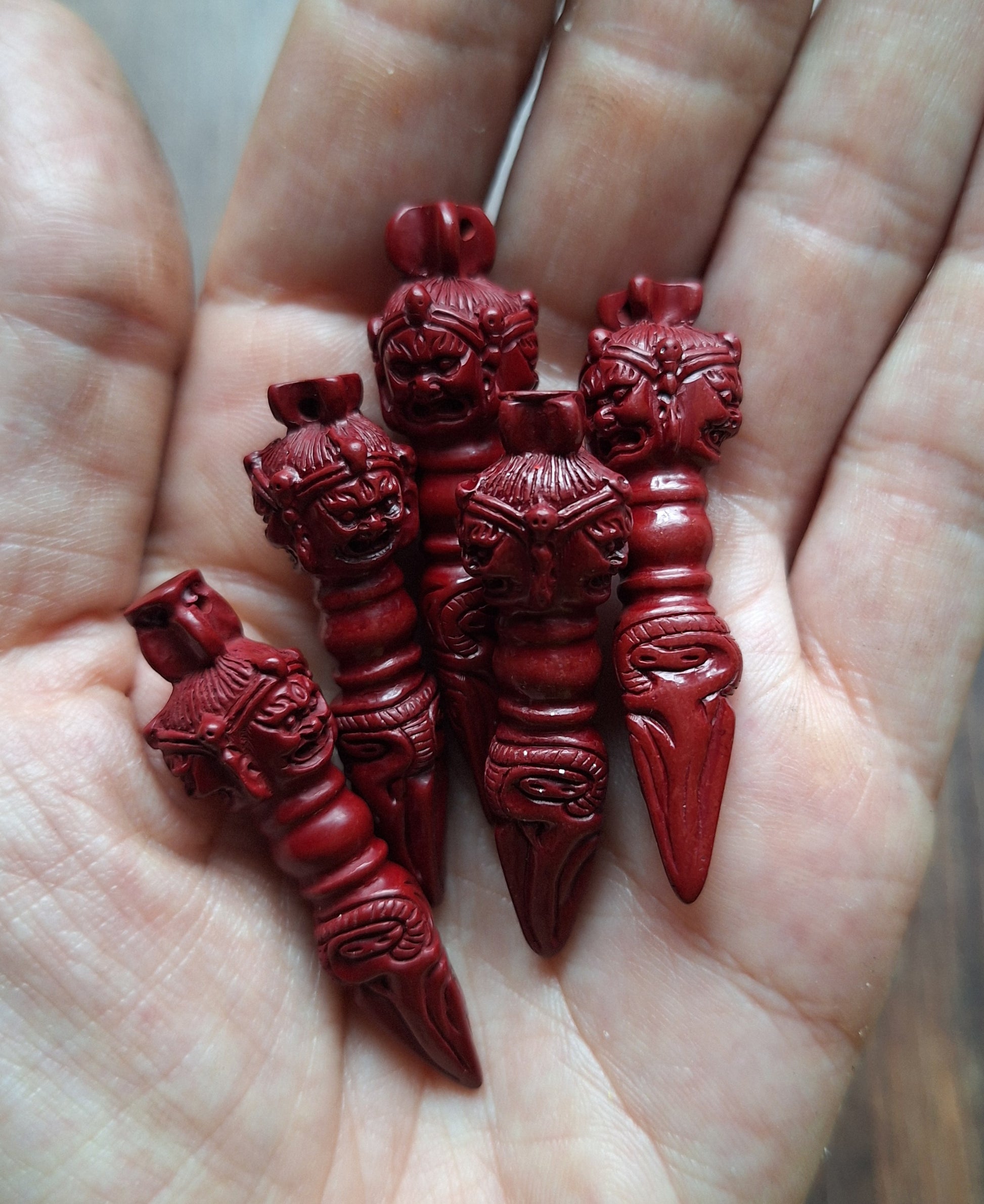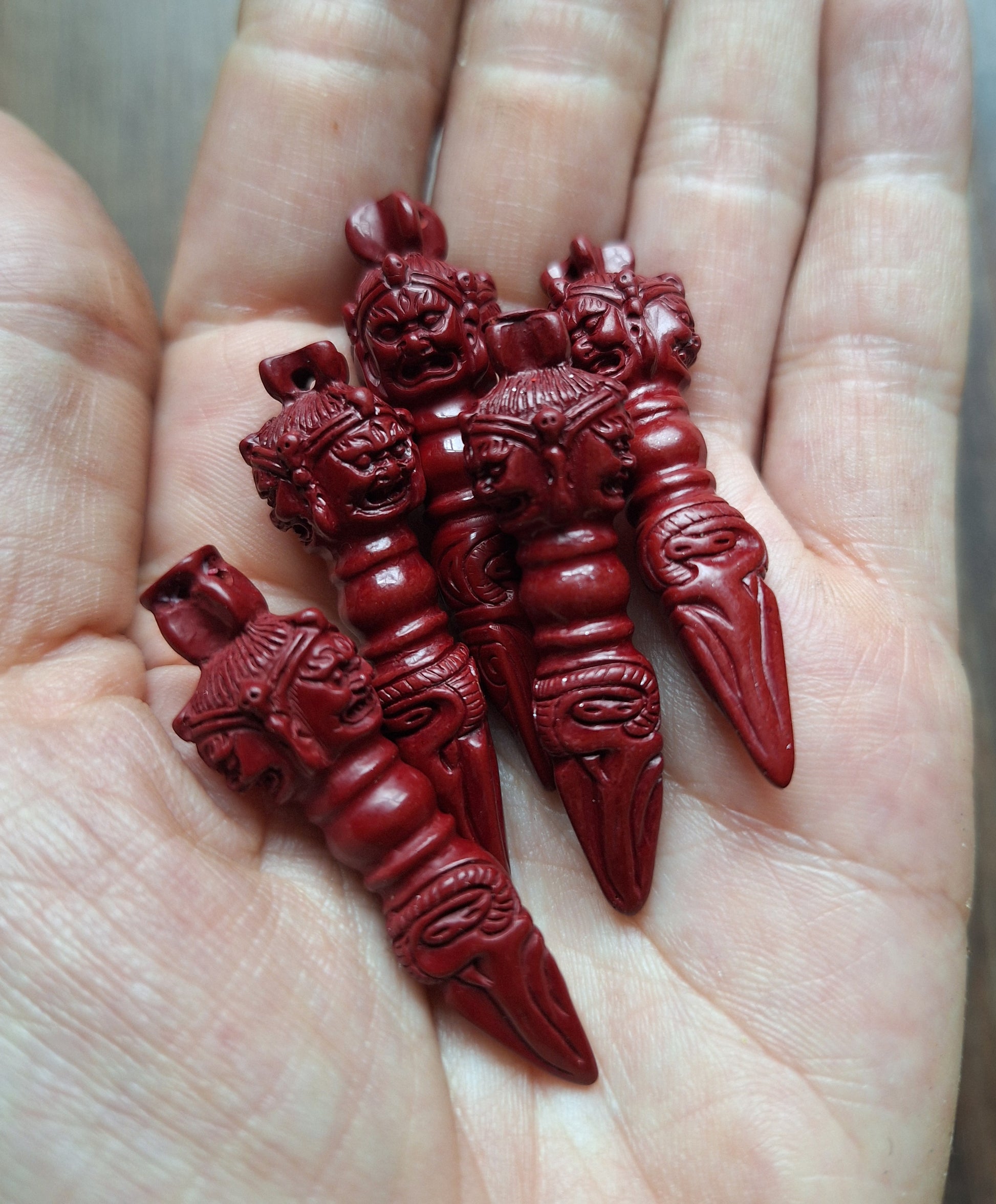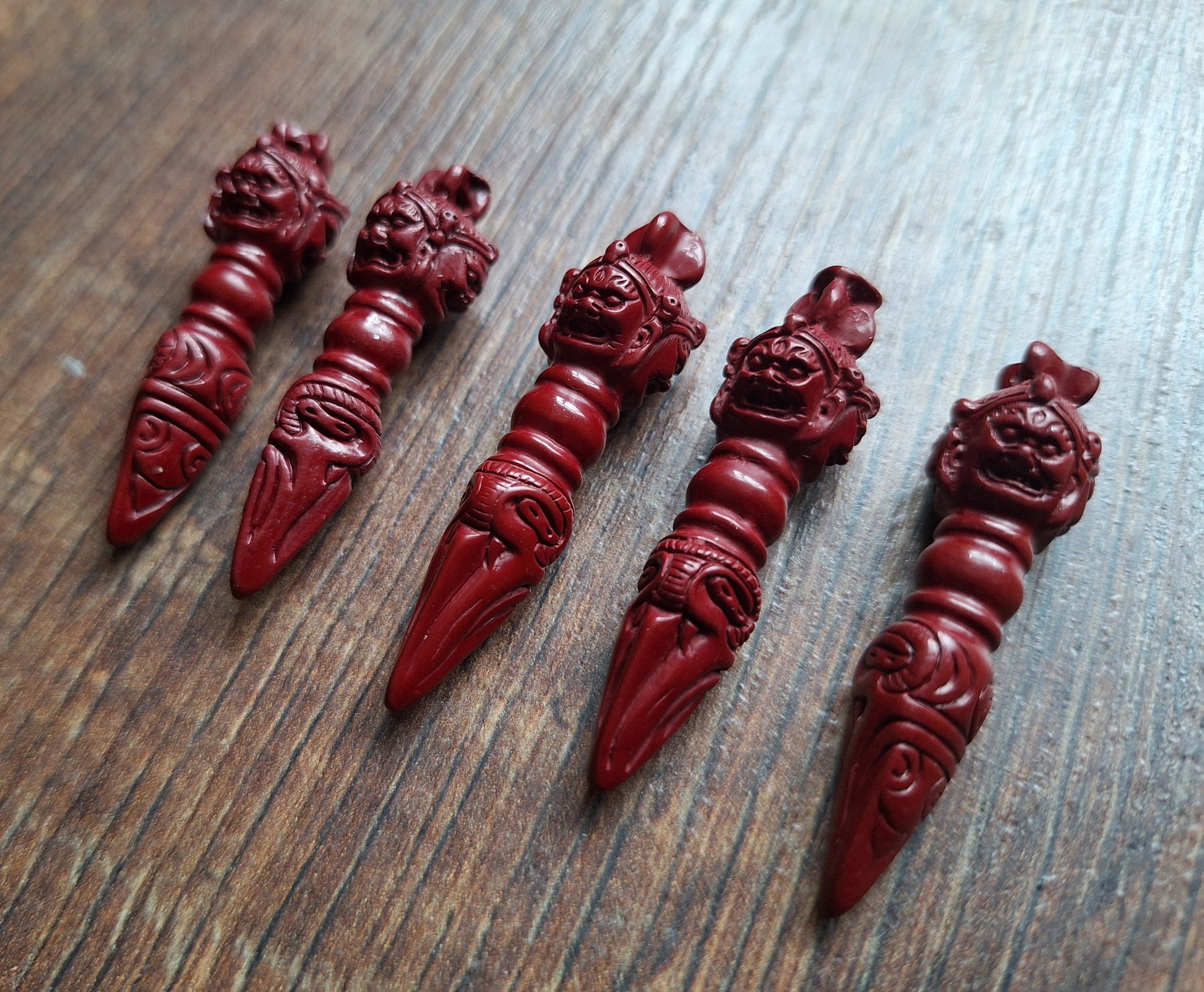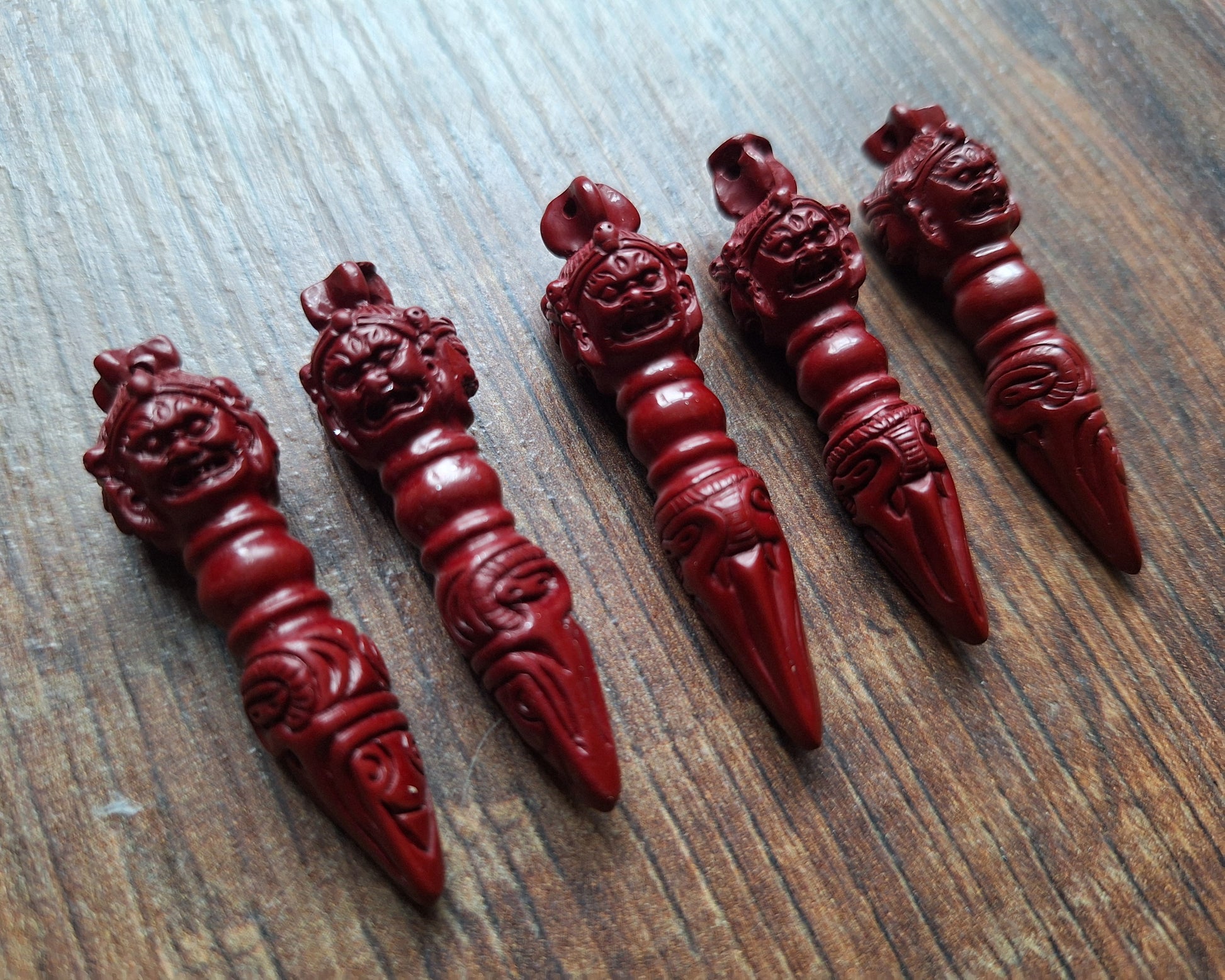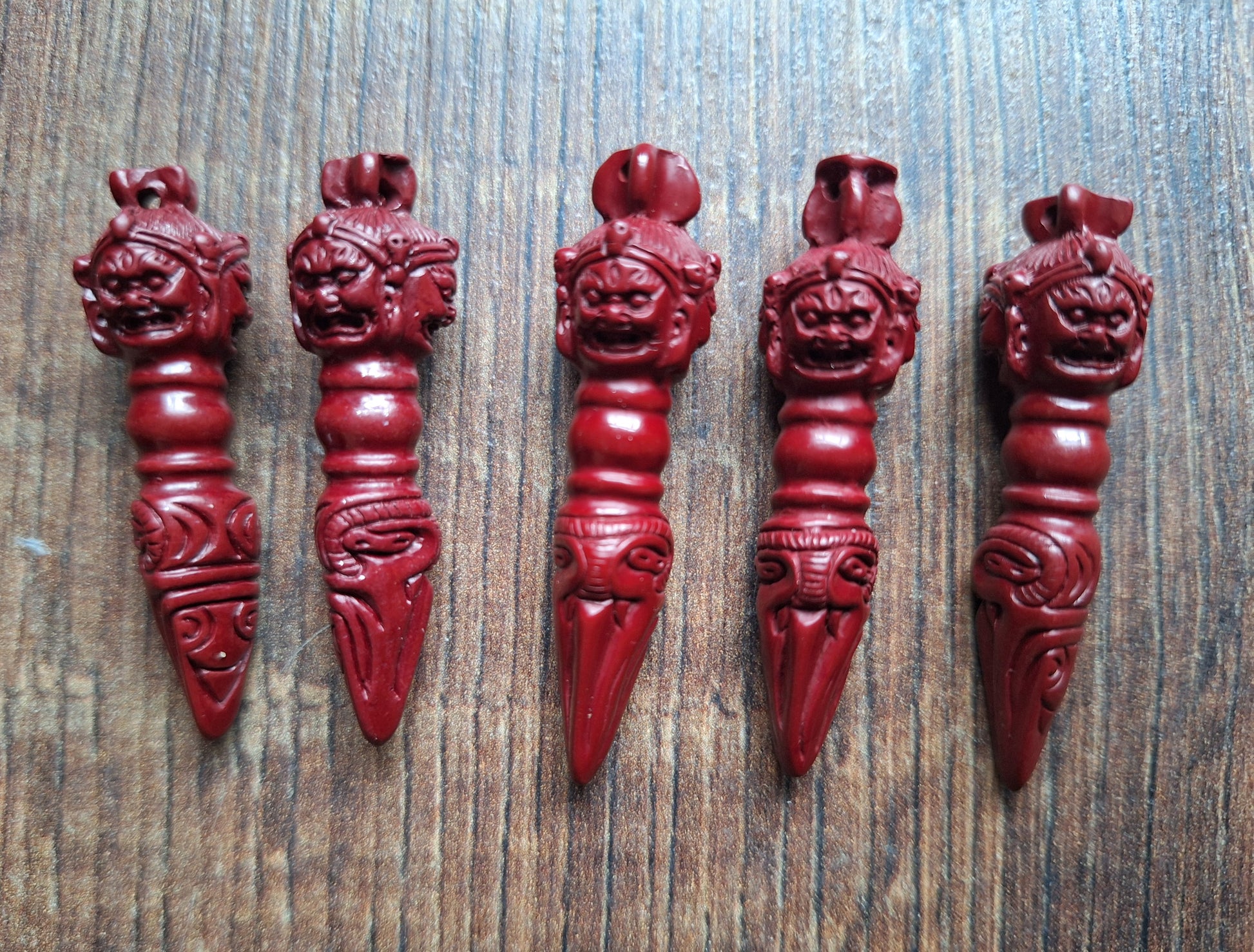Seawolf Shop
Phurba pendant #2
Phurba pendant #2
Couldn't load pickup availability
Share
Very nice phurba pendants from Tibet. Recently made. Phurba pendants such as these can be worn as a personal protective amulet or for that reason be attached to your ritual attributes or clothing, but can also be used as a fully-functional ritual weapon in handy travel size.
Sizes of the pendants vary a bit, between 4,7 - 5 centimeters long (measured including the eyelet).
These phurba pendants stand out for their exceptional red color, which is a resin-based polymer mimicking the appearance of cinnaber. Real cinnaber is an ore and a crystal that gets its bright red color from the toxic element mercury. This toxicity was already understood in Roman times, so ever since then the use of real cinnaber as a pigment has been more and more replaced by other, similiar materials.
Due to its amazing vermillion color, since ancient times cinnaber has been popular in many different countries and traditions for multiple uses. For example as a pigment in cosmetics, paint, decorative Chinese lacquerware and resin jewelry.
The name 'cinnaber' is said to derive from an Eastern Indian phrase meaning 'dragon's blood'. Since dragons were seen as very powerful and surely not to be messed with, but for the most part helpful, beneficial creatures, here's another reason why cinnaber was such a beloved ingredient and also has a long history in ritual uses, such as in blessings, burials and writing on oracle bones.
Design characteristics;
Pommel: a three-faced Vajrakilaya, with all faces having wrathful expressions.
Handle: a minimalist depiction of the dorje (vajra) symbol).
Blade: an abstract representation of the mythical watermonster Makara and some naga's.
Sold per piece. Minor variations in appearance may occur, we will handpick one at random for you.
Read more about the general and specific design and symbolism of the phurba in the general description of the webshop-collection "Ritual Attributes; Phurba's".
